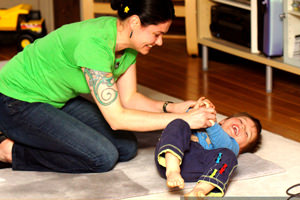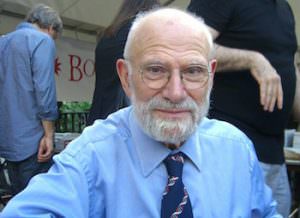The Verdict Is In: We Simply Can’t Tickle Ourselves
It is widely known in the scientific world that tickling oneself is an impossibility. But what if you were fooled into believing that it wasn't you doing the tickling?
It is widely known in the scientific world that tickling oneself is an impossibility. But what if you were fooled into believing that it wasn’t you doing the tickling?
Sarah-Jayne Blakemore and a few other scientists at University College London came up with the explanation in 2000 that, because our brain can predict the outcome of our movements based on motor commands, the moment we feel anything that matches these predictions, the brain “dampens down its response to those sensations.” This means your brain won’t let you chuckle at your own tickles because it knows they’re coming since it sent the commands to the muscles.
Now, a couple of scientists in Australia decided to try a simultaneous body swap illusion while running a tickle test in hopes of finding a way to dupe the mind into being tickled. Turns out, the brain will not be fooled. New Scientist outlines the experiment:
In this illusion, the volunteer and experimenter sat facing each other. The subject wore goggles that displayed the feed from a head-mounted camera. In some cases the camera was mounted on the subject’s head, so that they saw things from their own perspective, while in others it was mounted on the experimenter’s head, providing the subject with the experimenter’s perspective.
Using their right hands, both the subject and the experimenter held on to opposite ends of a wooden rod, which had a piece of foam attached to each end. The subject and experimenter placed their left palms against the foam at their end. Next, the subject or the experimenter took turns to move the rod with their right hand, causing the piece of foam to tickle both of their left palms.
In situations where the subjects saw the scene from the experimenter’s perspective, they experienced a body-swap illusion, which resulted in them feeling like they owned the experimenter’s body. The subjects agreed with statements like “I had lost control of my real hand” and “The experimenter’s hand began to resemble my own”.
If the experimenter tickled the subject while they were under the illusion, the subject could feel the tickle on their palm. But if the subject initiated the action while still under the illusion – attempting to tickle themselves – the subject didn’t feel the tickle on their left palm, even though it felt as though the experimenter was moving the rod. In other words, they couldn’t tickle themselves, even under the influence of the illusion.
According to Jakob Hohwy and George Van Doorn of Monash University in Clayton, Australia, their experiment invalidates Blakemore’s ideas about the brain’s dampened reactions. Since in the case of the body swap illusion “the command to move doesn’t result in the sight of your own hand moving,” it should trick the mind into allowing you to be tickled. However, Hohwy and Van Doorn believe that “the brain attenuates incoming sensations anytime we make a movement.” In other words, we can’t outsmart our brains because they’re always one step ahead of us. At least when it comes to tickling.
—Posted by Natasha Hakimi
Your support matters…Independent journalism is under threat and overshadowed by heavily funded mainstream media.
You can help level the playing field. Become a member.
Your tax-deductible contribution keeps us digging beneath the headlines to give you thought-provoking, investigative reporting and analysis that unearths what's really happening- without compromise.
Give today to support our courageous, independent journalists.






You need to be a supporter to comment.
There are currently no responses to this article.
Be the first to respond.